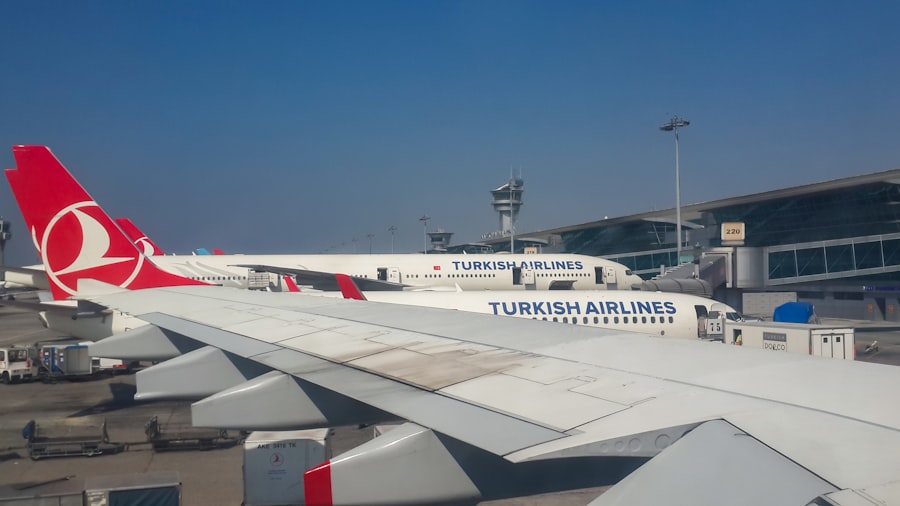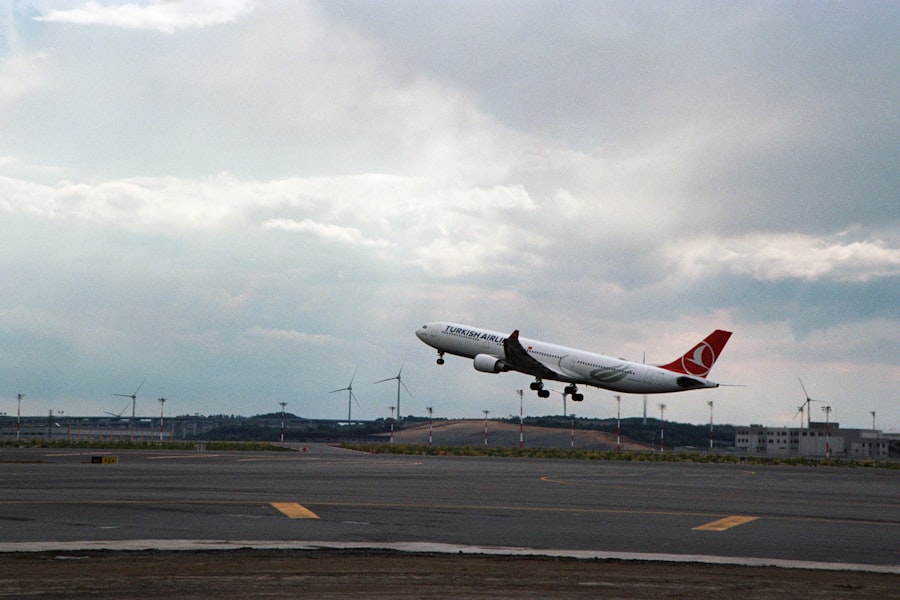Turkish Aerospace Industries (TAI) stands as a pivotal entity in the realm of aerospace and defense, representing Turkey’s ambitions to become a significant player on the global stage. Established with the vision of developing indigenous capabilities in aviation and space technologies, TAI has evolved into a comprehensive organization that designs, manufactures, and maintains a wide array of aircraft, helicopters, unmanned aerial vehicles (UAVs), and space systems. The company not only serves the Turkish Armed Forces but also caters to international markets, showcasing Turkey’s growing expertise in high-tech industries.
The significance of TAI extends beyond mere manufacturing; it embodies Turkey’s strategic objectives in enhancing national security and fostering technological independence. As geopolitical dynamics shift and the demand for advanced military and civilian aviation solutions increases, TAI’s role becomes increasingly critical. The organization is not just a manufacturer; it is a symbol of national pride and a testament to Turkey’s aspirations in the aerospace sector.
Key Takeaways
- Turkish Aerospace Industries (TAI) has evolved into a leading aerospace company with a rich history and significant growth.
- TAI has achieved major milestones in aviation, including the development of indigenous aircraft and advanced aerospace technologies.
- Strategic partnerships and collaborations have been crucial in expanding TAI’s capabilities and global reach.
- The company is at the forefront of technological innovation, contributing to advancements in aerospace engineering.
- TAI plays a vital role in shaping the future of aviation with ambitious expansion plans and a strong global impact.
History and Evolution of Turkish Aerospace Industries
The roots of Turkish Aerospace Industries can be traced back to the establishment of the Turkish Aircraft Industries (TAI) in 1973, which was initially focused on producing military aircraft under license from foreign manufacturers. The early years were marked by collaborations with established aerospace companies, allowing TAI to gain valuable experience and technical know-how. This foundational period set the stage for TAI’s evolution into a self-sufficient aerospace powerhouse.
In the 1990s, TAI underwent significant transformations, including its restructuring into a joint-stock company in 2005. This change was pivotal as it allowed for greater flexibility and responsiveness to market demands. The company began to diversify its portfolio, venturing into the design and production of indigenous aircraft such as the T-129 ATAK helicopter and the HÜRKUŞ trainer aircraft.
These developments marked a turning point, as TAI transitioned from being a license manufacturer to an innovator capable of producing advanced aerospace systems independently.
Key Achievements and Milestones in Aviation

TAI has achieved numerous milestones that underscore its capabilities and ambitions within the aerospace sector. One of its most notable accomplishments is the development of the T-129 ATAK helicopter, which has garnered international attention for its advanced avionics and combat capabilities. Designed for close air support missions, the T-129 has been successfully deployed in various operational theaters, demonstrating its effectiveness in real-world scenarios.
Another significant achievement is the HÜRKUŞ trainer aircraft, which represents Turkey’s first indigenous basic trainer. The HÜRKUŞ has been designed to meet both military and civilian training needs, showcasing TAI’s versatility in addressing diverse market requirements. The aircraft has undergone rigorous testing and has received certification from various aviation authorities, further solidifying TAI’s reputation as a reliable manufacturer of advanced aviation systems.
Strategic Partnerships and Collaborations
| Metric | Description | Example Value | Measurement Frequency |
|---|---|---|---|
| Number of Active Partnerships | Total count of ongoing strategic partnerships and collaborations | 15 | Quarterly |
| Partnership Contribution to Revenue | Percentage of total revenue generated through partnerships | 30% | Annually |
| Joint Product Launches | Number of new products or services launched in collaboration with partners | 4 | Annually |
| Partner Satisfaction Score | Average satisfaction rating from partners on collaboration effectiveness | 8.5 / 10 | Bi-Annually |
| Time to Partnership Activation | Average time taken from agreement signing to active collaboration | 3 months | Per Partnership |
| Co-Marketing Campaigns | Number of marketing campaigns executed jointly with partners | 7 | Quarterly |
| Cost Savings from Collaborations | Percentage reduction in costs due to shared resources or joint initiatives | 12% | Annually |
| Innovation Projects Initiated | Number of new innovation or R&D projects started with partners | 3 | Annually |
Strategic partnerships have played a crucial role in TAI’s growth trajectory. Collaborations with international aerospace giants such as Boeing, Lockheed Martin, and Airbus have facilitated technology transfer and knowledge sharing, enabling TAI to enhance its capabilities. These partnerships have not only bolstered TAI’s technical expertise but have also opened doors to new markets and opportunities for joint ventures.
Moreover, TAI has actively engaged in collaborative projects with other countries, particularly within NATO frameworks. For instance, TAI’s involvement in the development of the F-35 Lightning II program exemplifies its commitment to participating in cutting-edge defense initiatives. Such collaborations not only enhance TAI’s technological prowess but also position Turkey as a key player in global defense networks.
Technological Advancements and Innovations
Innovation is at the heart of TAI’s operations, driving its commitment to developing state-of-the-art aerospace technologies. The company has invested heavily in research and development (R&D), focusing on areas such as avionics, materials science, and propulsion systems. This emphasis on R&D has led to breakthroughs that enhance the performance and efficiency of TAI’s aircraft.
One notable innovation is the development of unmanned aerial vehicles (UAVs), particularly the ANKA series. These UAVs are equipped with advanced sensors and payloads, enabling them to perform intelligence, surveillance, and reconnaissance (ISR) missions effectively. The ANKA has been deployed in various operational contexts, showcasing its adaptability and reliability.
Additionally, TAI is exploring next-generation technologies such as artificial intelligence (AI) and autonomous systems, positioning itself at the forefront of aerospace innovation.
Impact on the Global Aviation Industry

TAI’s influence extends beyond national borders, impacting the global aviation industry significantly. As Turkey continues to develop its aerospace capabilities, TAI has emerged as a competitive player in international markets. The company’s products are increasingly sought after by foreign governments and defense organizations, reflecting a growing recognition of Turkish engineering excellence.
Furthermore, TAI’s commitment to quality and innovation has led to successful exports of various platforms, including helicopters and UAVs. The international success of the T-129 ATAK helicopter in markets such as the Philippines and Azerbaijan underscores TAI’s ability to compete on a global scale. This expansion not only contributes to Turkey’s economy but also enhances its geopolitical standing by fostering defense relationships with allied nations.
Future Prospects and Expansion Plans
Looking ahead, TAI is poised for continued growth and expansion within the aerospace sector. The company has outlined ambitious plans to diversify its product offerings further and enhance its technological capabilities. One of the key areas of focus is the development of advanced fighter jets, with projects like the TF-X program aimed at creating Turkey’s first indigenous fifth-generation fighter aircraft.
Additionally, TAI is exploring opportunities in space technologies, including satellite systems and launch vehicles. As global interest in space exploration intensifies, TAI aims to position itself as a significant contributor to this burgeoning field. By investing in cutting-edge technologies and fostering partnerships with international space agencies, TAI seeks to expand its footprint beyond traditional aviation markets.
TAI’s Role in Shaping the Future of Aviation
Turkish Aerospace Industries stands at a critical juncture in its journey toward becoming a leading force in global aviation. With a rich history marked by significant achievements and strategic collaborations, TAI has established itself as a key player in both military and civilian aerospace sectors. Its commitment to innovation and technological advancement positions it well for future challenges and opportunities.
As TAI continues to expand its capabilities and explore new frontiers in aerospace technology, it will undoubtedly play a vital role in shaping the future of aviation not only within Turkey but also on a global scale. The organization’s vision for growth aligns with broader trends in the industry, emphasizing sustainability, advanced technologies, and international collaboration. In this context, TAI is not merely an aerospace manufacturer; it is an architect of future possibilities in aviation.




